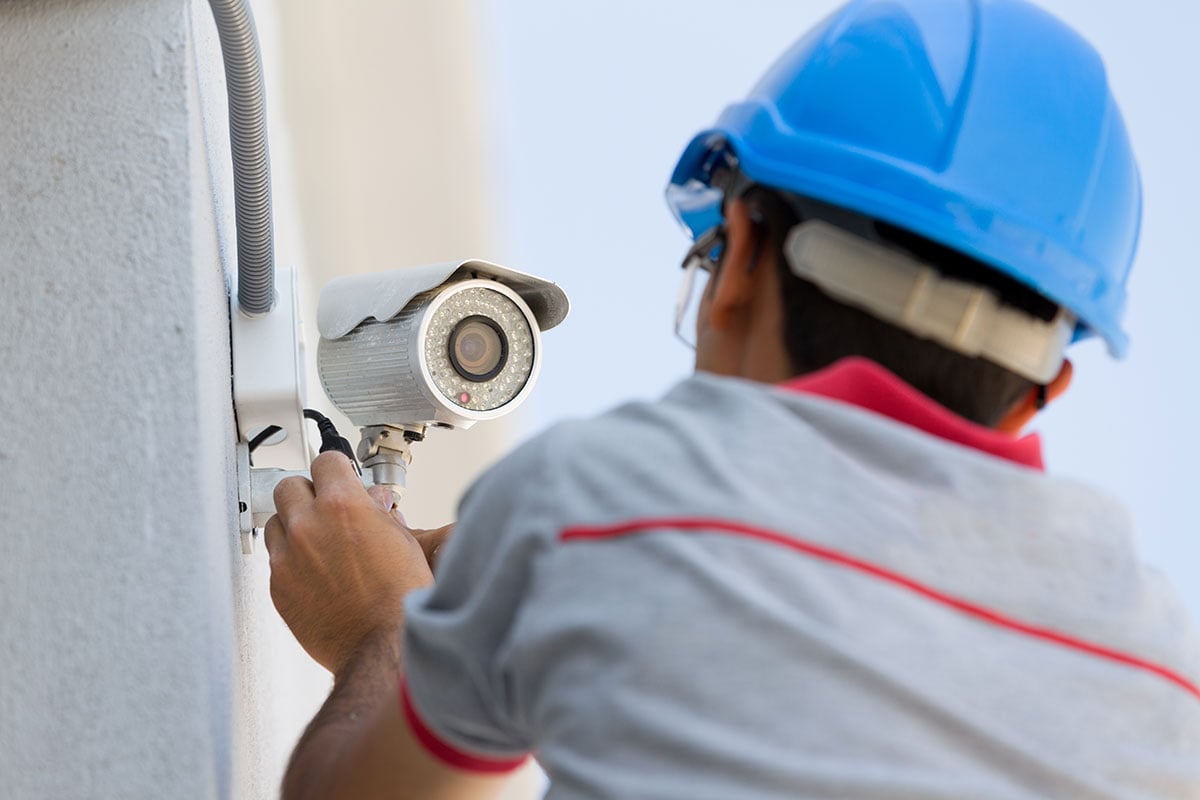
Balancing Workplace Monitoring and Employee Privacy Rights

Does your company keep a digital eye on employees throughout the workday? You’re not alone. According to an American Management Association survey, 80% of employers use some form of electronic workplace monitoring.
There are good business reasons for doing so. Workplace monitoring can help ensure a safe workplace, prevent theft and sabotage, and keep productivity high.
However, there is a distinct downside. Employees under constant surveillance may be stressed or feel dehumanized. While the goal may be to elevate productivity, it can, in fact, lower morale. In addition, companies run the risk of violating employee privacy rights, which aren’t always clear-cut. In other words, it’s complicated!
Employee Monitoring: How Much Is Too Much?
Thanks to ever-advancing technology, employers are now enacting measures that seem straight out of science fiction. Take Three Square Market, a Wisconsin-based vending machine manufacturer made famous for implanting microchips in about 80% of its workforce.
While the microchips—which are voluntary—allow employees to open secure doors and log onto computers with a wave of the hand, they don’t track the employees’ movements.
But that’s not the case with some Chinese companies, which are reportedly using sensor-studded helmets to scan employee brainwaves, detecting fatigue and stress. At least one company is purportedly using the data to determine when breaks are needed.
Another example: Amazon was granted patents for GPS wristbands that not only track workers’ locations in the warehouse, but read their hand movements and provide feedback that helps them pick the right items faster.
Is it cool, or invasive and creepy? Or maybe a little of both?
Everyday Forms of Workplace Monitoring
For most companies, employee monitoring isn’t that extreme. According to the American Management Association (AMA), most employers employ the following surveillance methods:
- Internet Use – Here, employers are most concerned that employees will view or download offensive content, violate company policy, or engage in excessive personal use.
- Employee Emails – Misuse of the company’s email system often translates to policy violations, excessive personal use, or breach of confidentiality.
- Phone Calls and Voicemail – While monitoring calls can be needed for quality control, some employers are also sensitive to misuse of its phone system by overly-talkative workers.
- Video Surveillance – Video surveillance can be very effective at discouraging employee and customer misconduct. In the AMA survey, nearly half of the companies surveyed use it to manage theft, violence, and sabotage, while only 7% use it to monitor performance.
- GPS Tracking – Only a small percentage of employers use GPS tracking to monitor company vehicles and property. However, it’s become an increasingly popular component of mobile time tracking apps, allowing employers to verify that employees are where they should be when punching the clock.
Legislation Regarding Employee Privacy Rights
There is little federal legislation that directly addresses employee privacy rights—that’s part of the challenge for employers. The primary restriction on workplace monitoring comes from the Electronic Communications Privacy Act of 1986, which prohibits companies from intercepting oral, wire or electronic communications, with two big exceptions: (1) there’s a legitimate business reason to do so, or (2) employees have provided consent.
Because federal law offers employers a good deal of leeway, some states have enacted laws of their own, many which mandate broader employee consent requirements or specifically limit video surveillance.
How Do You Strike a Balance?
To protect employee privacy rights, HR experts recommend exercising great care when implementing workforce monitoring strategies. For starters:
- Make sure you have a legitimate business reason for doing it—and document it.
- Be transparent. Let your employees know what you’re doing and why. (Studies show workers aren’t as concerned about surveillance if they are advised about it upfront.)
- Obtain your employees’ written consent to be monitored.
- When using video surveillance, make sure all cameras are clearly visible and placed in public places. Don’t place cameras where employees may have reasonable expectations of privacy.
- Be especially careful when recording phone calls or capturing audio.
- Create a written privacy policy, to include in your employee handbook.
- Develop safeguards about how such collected data is used and protected.
Make sure to stay up to date on the latest workplace monitoring and employee privacy rights by investing in HR compliance support. Each state and local jurisdiction has different requirements. For example, New York requires electronic monitoring notice.

See how Namely's flexible solution will help you streamline your HR processes by having your people, payroll, and benefits info all in on place.
Get a demoYou May Also Like
Get the latest news from Namely about HR, Payroll, and Benefits.
Thanks for subscribing!


Get the latest news from Namely about HR, Payroll, and Benefits.
Thanks for subscribing!



